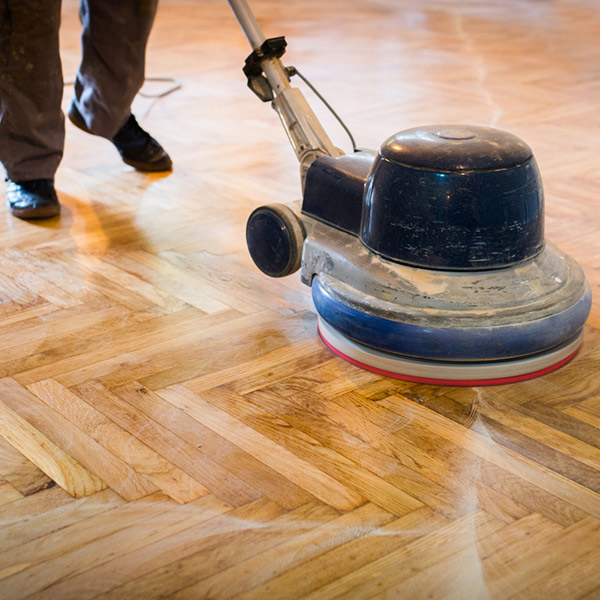Sanding and oiling: the ideal treatment for parquet
Wooden floors ensure a healthy living environment - if a few, but important points are taken into account when treating the surface.
Sanding, applying several layers of oil and polishing - you do not have to do more for the perfect treatment of parquet. It depends above all on the careful preparatory work and on applying everything evenly, but the types of wood used for the flooring also play a role.
Preparation
For the processing and drying of the parquet oil, a room temperature of 18 to 22 °C is ideal. The oil itself should also have room temperature during processing. Since the first coat should be applied if possible in a single operation, the required amount should be available before starting. Consumption is about the same for all wood types. For all three coats 60-80 ml / m² can be expected. However, the largest part of it is consumed during the application on the still untreated wood.
Sanding - the finer the nicer the surface
It is important that the flooring is carefully prepared for the treatment. All wood types should be pre-sanded in several stages up to grain size 180. Coarser sanding often causes sanding marks that only become visible after the parquet has been oiled and then require re-sanding. The sanding must be even, including the corners of the room.
Apply the first coat generously and uniformly
The first application of parquet oil on the flooring after sanding should be very generous. The easiest way is to pour the oil directly onto the ground and then spread it with a rubber scraper. For corners and hard-to-reach places, however, a brush is better suited. The oil should be so rich on the surface that it crawls into the wood in about 15 minutes. If it penetrates more quickly into the wood fibers, the surface should be re-oiled. Depending on the wood type, the penetration may be very different here and there. In these cases, supernatants can be moved to more absorbent sites.
Remove excess material from the parquet
After about fifteen minutes, all oil that has not yet penetrated into the wood should be removed from the floor with an absorbent, lint-free cloth. When it comes to the treatment of large areas, a polishing machine with appropriate absorbent pads is helpful. If the oil is carefully removed from the flooring at this stage of the treatment, no further sanding is required.
Avoid stains on untreated parquet
In order to avoid unpleasant spots on the surface, the wood must not be walked on with oil-soaked shoes before the treatment. Once the flooring has been oiled, the parquet floor can be entered with plastic shoes or with shoes that have been protected with a plastic wrap.
Apply the second and the third coat sparingly
Unlike the first coat, in the following two steps, only little oil is applied to all wood types. It is spread only with a few splashes and immediately polished in. This can be done with a soft cloth, by hand or with a machine. The right amount of oil results in a uniformly shiny surface. Since the wood already largely saturated since the first application, it now absorbs only very little oil, which should be distributed as quickly as possible. Under no circumstances should moist, shiny pools of oil remain on the wood. This is especially important for weakly absorbent wood types, such as oak.
Allow the oiled flooring to dry well
The flooring can be walked on after about one day. It is best to wait two to three days to set up furniture, and even longer with laying carpets in order to avoid stains and to achieve complete drying.
Photo Credits: © fotokostic - iStock.com


